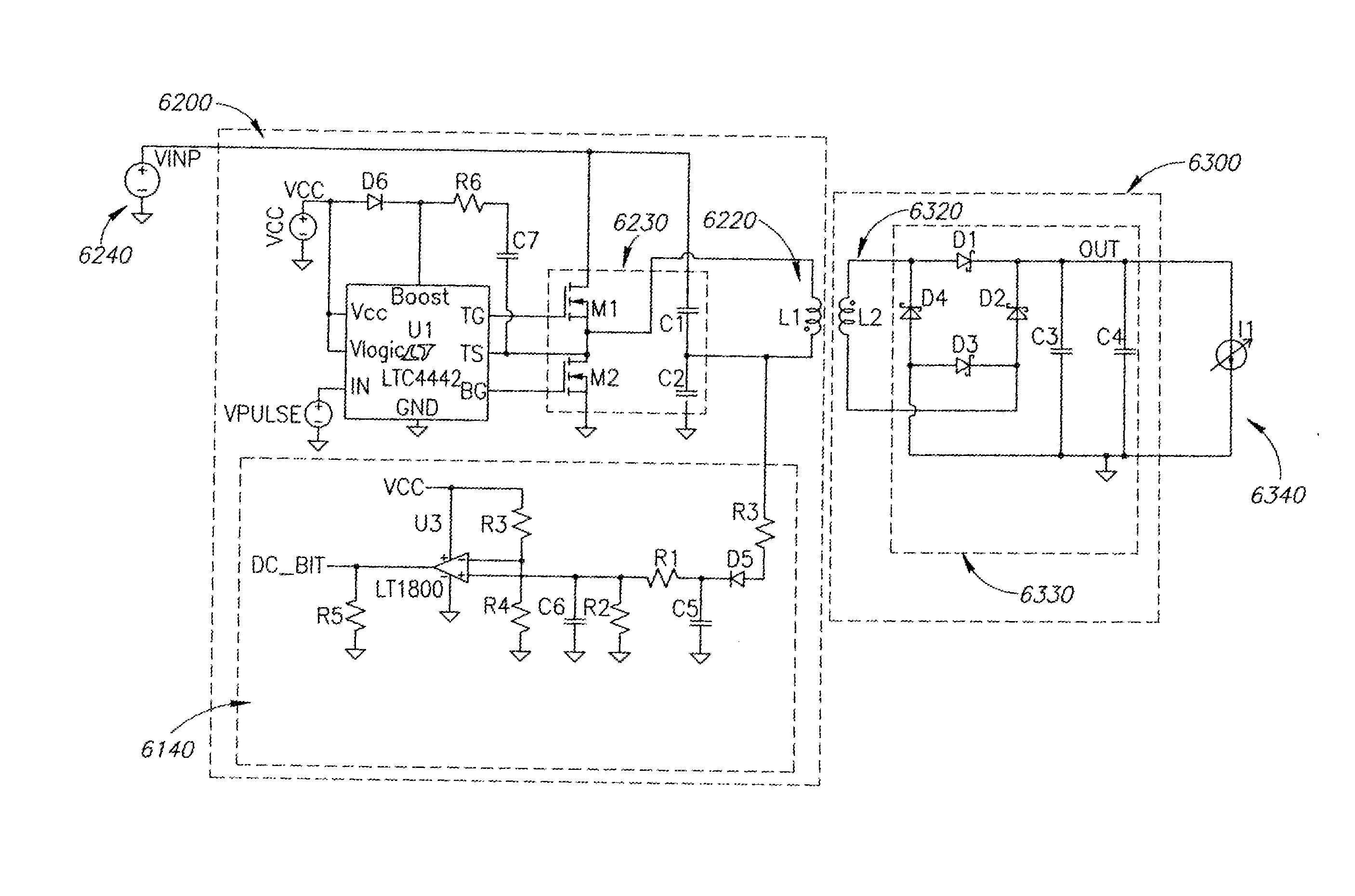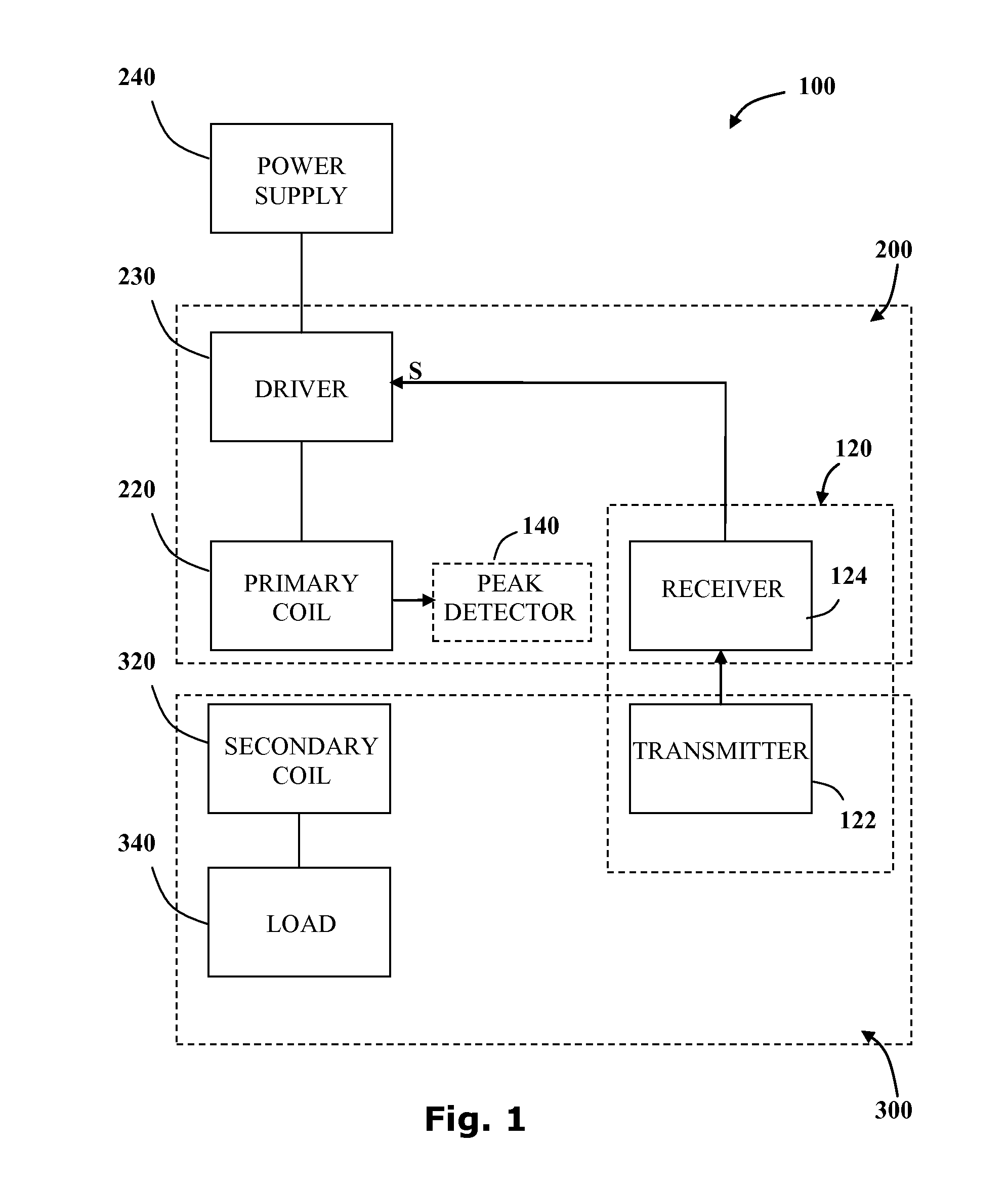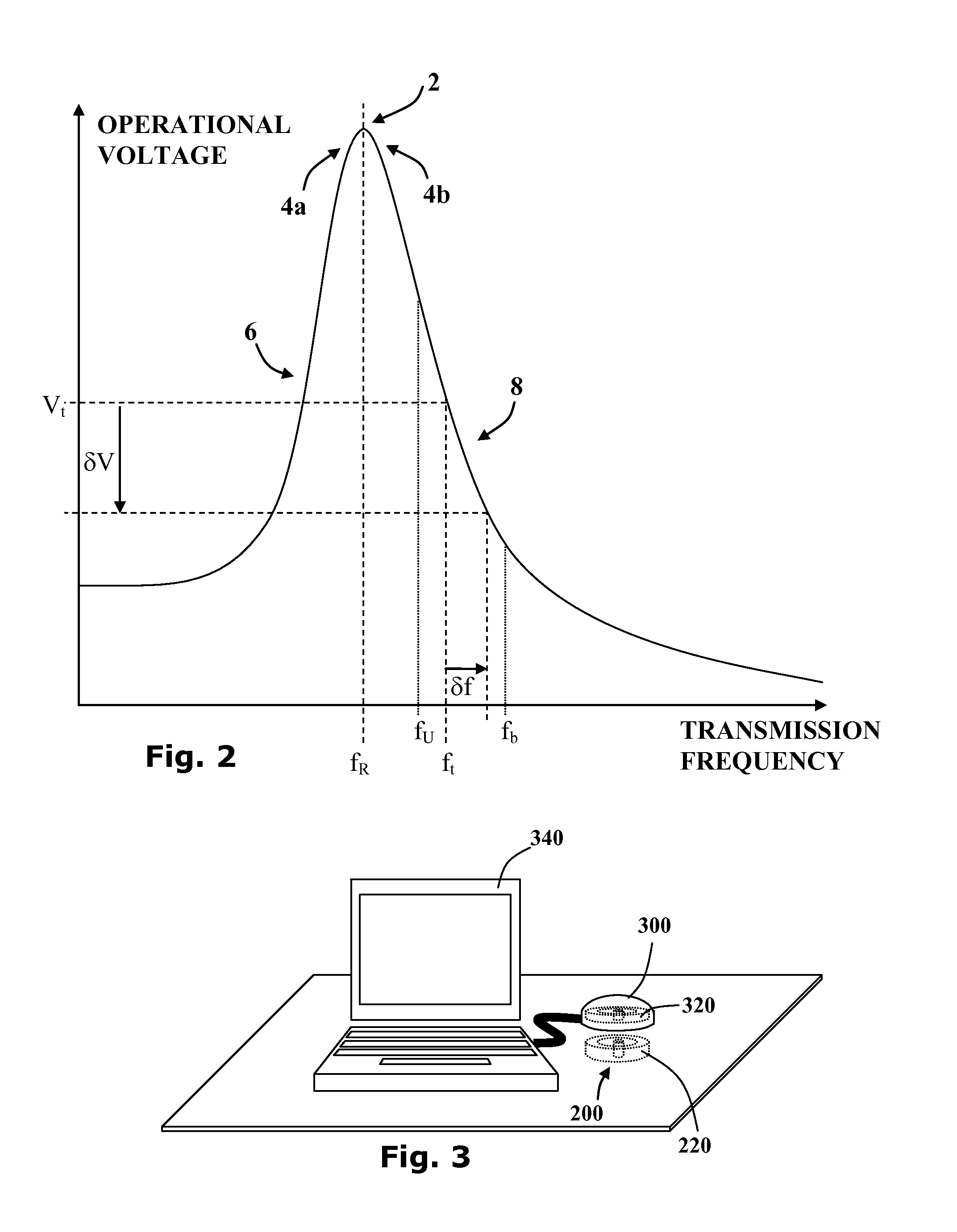Energy efficient inductive power transmission system and method
a technology energy efficient, applied in the direction of inductance, circuit arrangement, safety/protection circuit, etc., can solve the problems of increasing energy cost, and affecting the efficiency of inductive power transmission
- Summary
- Abstract
- Description
- Claims
- Application Information
AI Technical Summary
Benefits of technology
Problems solved by technology
Method used
Image
Examples
Embodiment Construction
[0091]Reference is now made to FIG. 1 showing a block diagram of the main elements of an inductive power transfer system 100 adapted to transmit power at a non-resonant frequency according to another embodiment of the invention. The inductive power transfer system 100 consists of an inductive power outlet 200 configured to provide power to a remote secondary unit 300. The inductive power outlet 200 includes a primary inductive coil 220 wired to a power source 240 via a driver 230. The driver 230 is configured to provide an oscillating driving voltage to the primary inductive coil 220.
[0092]The secondary unit 300 includes a secondary inductive coil 320, wired to an electric load 340, which is inductively coupled to the primary inductive coil 220. The electric load 340 draws power from the power source 240. A communication channel 120 may be provided between a transmitter 122 associated with the secondary unit 300 and a receiver 124 associated with the inductive power outlet 200. The ...
PUM
| Property | Measurement | Unit |
|---|---|---|
| induced voltage | aaaaa | aaaaa |
| time duration | aaaaa | aaaaa |
| time duration | aaaaa | aaaaa |
Abstract
Description
Claims
Application Information
 Login to View More
Login to View More - R&D
- Intellectual Property
- Life Sciences
- Materials
- Tech Scout
- Unparalleled Data Quality
- Higher Quality Content
- 60% Fewer Hallucinations
Browse by: Latest US Patents, China's latest patents, Technical Efficacy Thesaurus, Application Domain, Technology Topic, Popular Technical Reports.
© 2025 PatSnap. All rights reserved.Legal|Privacy policy|Modern Slavery Act Transparency Statement|Sitemap|About US| Contact US: help@patsnap.com



